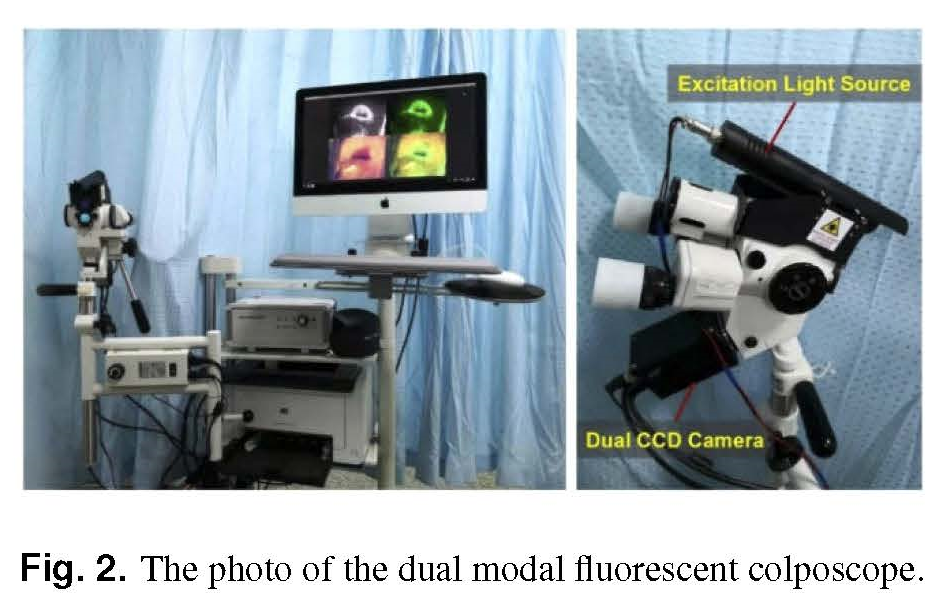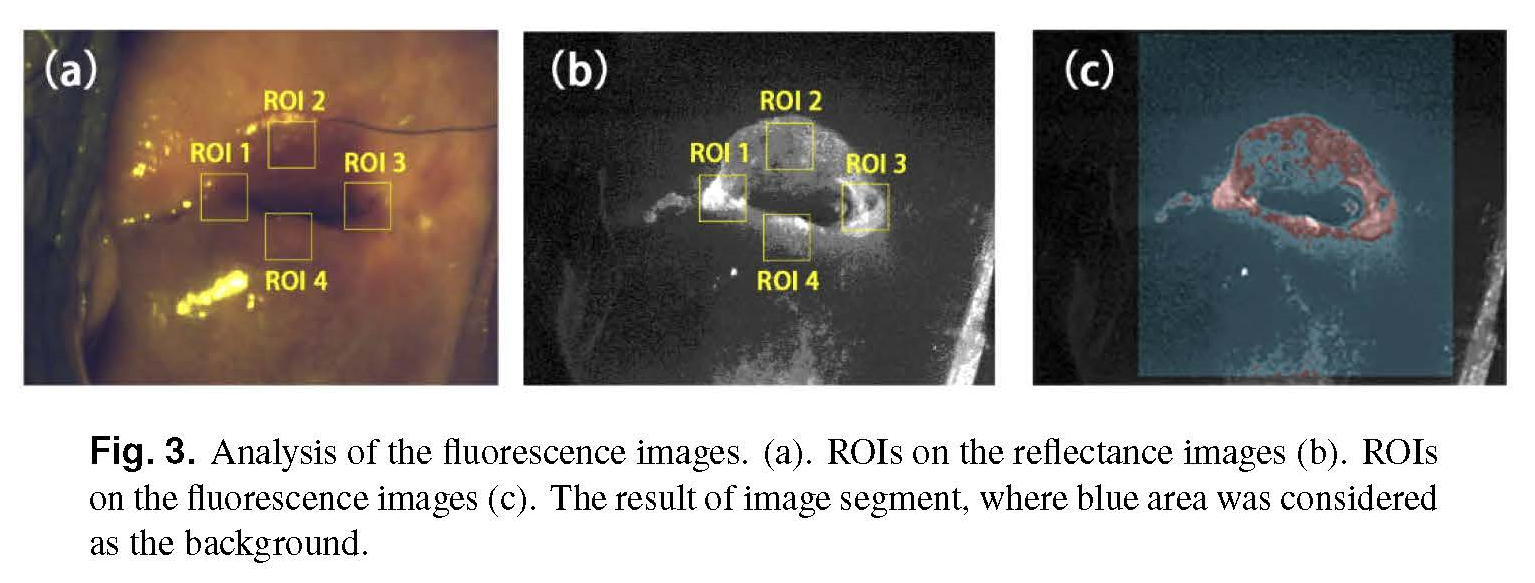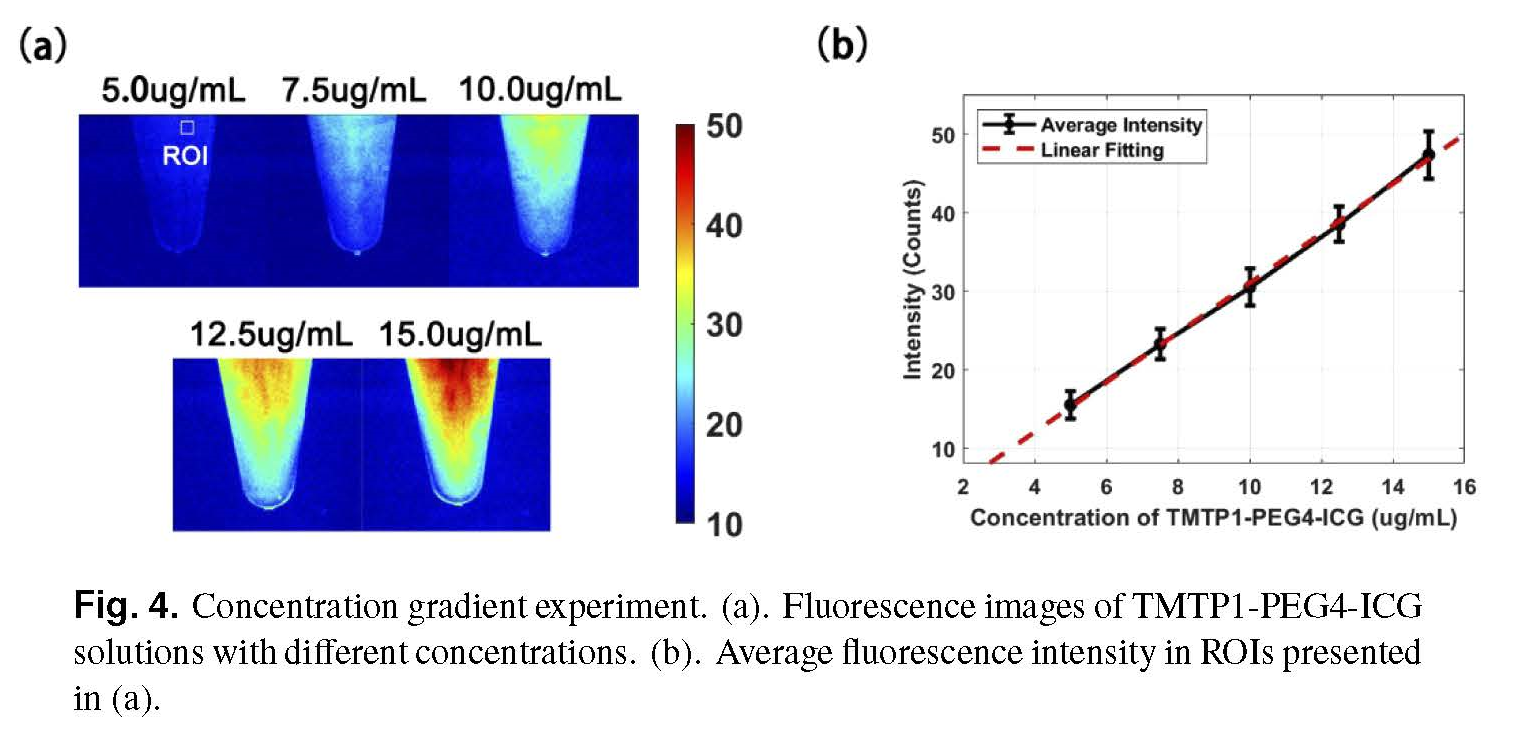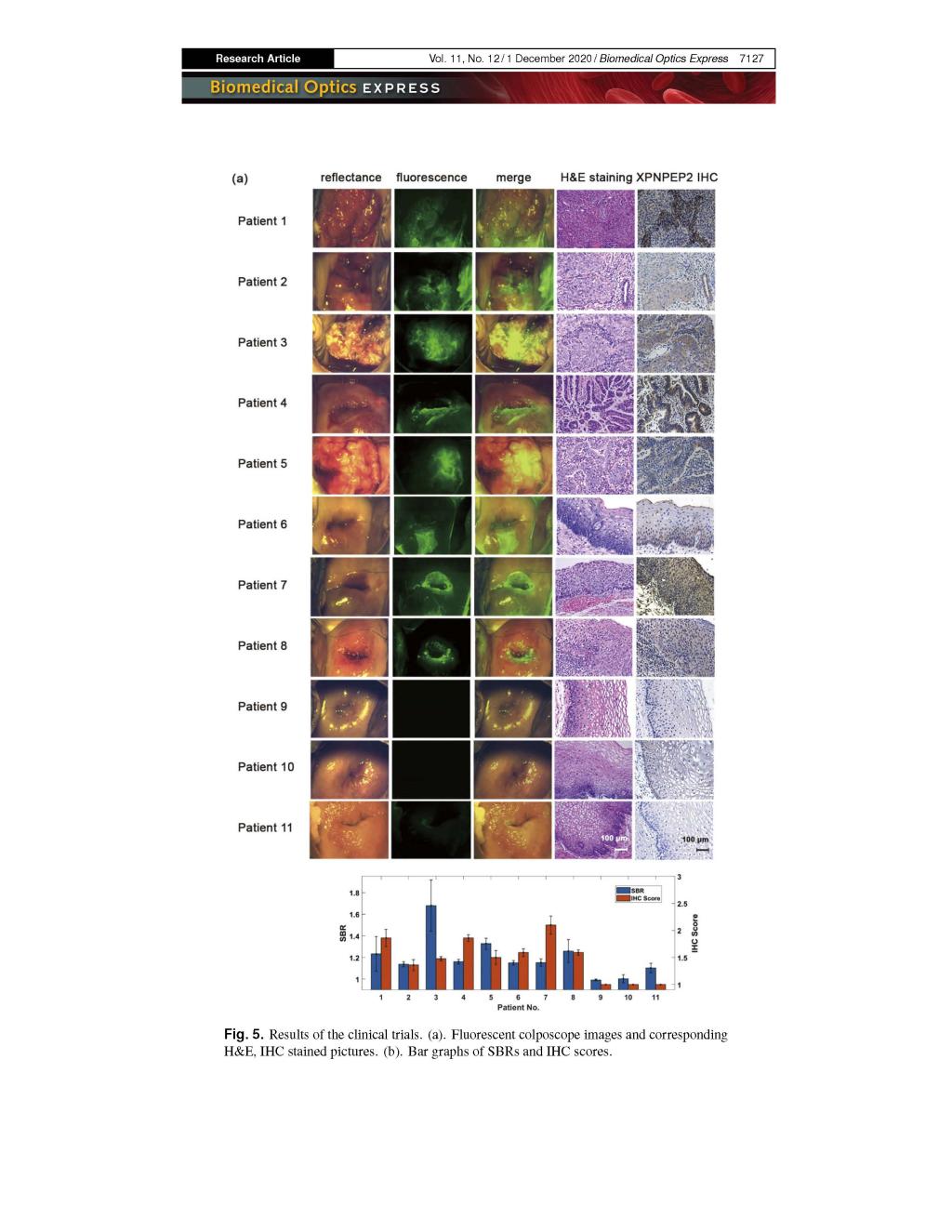Tongji Hospital Oncology Biomedical Center (Academician Ding Ma’s Laboratory) focuses on cross integration with other disciplines and forms interdisciplinary innovative research teams based on the advantages of each discipline. At present, extensive cooperation in deep learning and image recognition, combination of new nanomaterials and tumor-targeted therapy, etc. are carried out, and difficult problems in the field of gynecological tumor are solved by integration innovation, especially, in the development of fluorescence colposcopy, substantial progress has been made.

Cervical cancer is the most common malignant tumor among gynecologic oncologic diseases, and the key of treatment is early detection and early intervention; colposcopy is the most important tool for early diagnosis of cervical cancer.

Conventional acetic acid and iodine staining to guide colposcopic biopsy sampling has the problem of poor sensitivity.
TMTP1 is a repetitive peptide sequence with specific binding ability to tumor cells screened by bacterial flagellar peptide library demonstration technology which used in Ding Ma’s laboratory, and the binding ability of TMTP1 to cervical cancer cells was verified in both in vivo and in vitro studies.

Indocyanine green (ICG), a highly sensitive near-infrared fluorescein, has been used extensively in recent years for the diagnosis and treatment of tumors.
However, due to the lack of specific receptors for ICG, the imaging of tumor lesions suffers from a high false-positive rate.

Based on the above background, academician Ding Ma's laboratory has attempted to connect ICG with TMTP1 to construct a new tumor-targeting fluorescent imaging agent TMTP1-ICG, which has been shown to specifically bind tumor cells in vivo and in vitro experiments; meanwhile, Professor Pengcheng Li's group at the Functional Laboratory of Biomedical Photonics of Wuhan National Research Center for Photonics has designed and developed a fluorescent colposcope that can image this new agent, which can be used to guide colposcopic biopsy of cervical tissue and is expected to significantly improve the sensitivity of colposcopy.

The above achievements have been published inBiomedical Optics Expressin November 2020.
